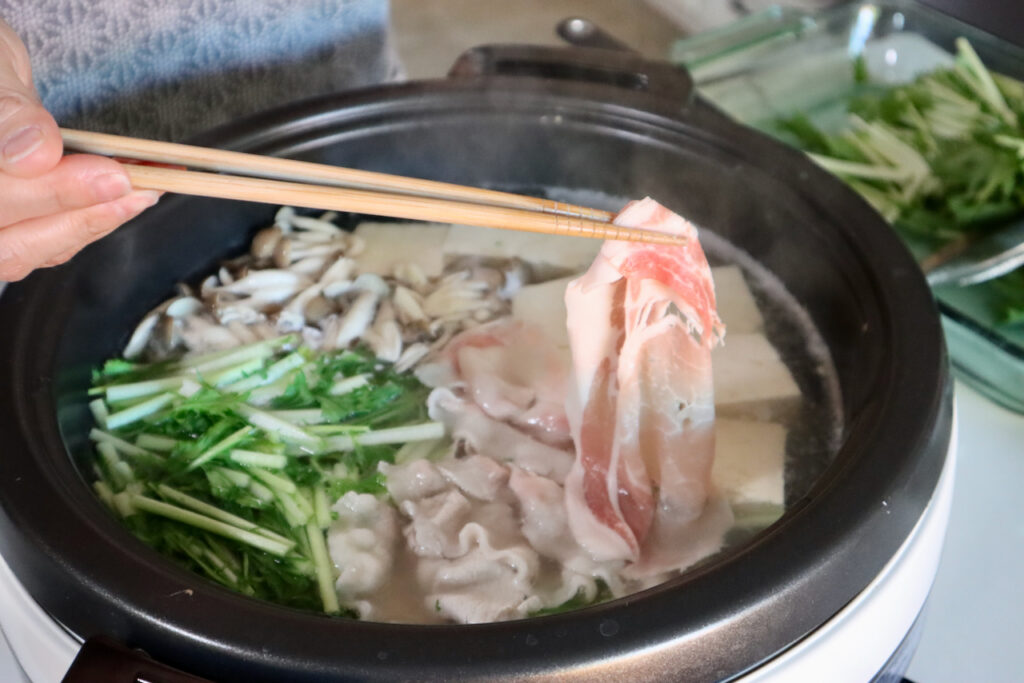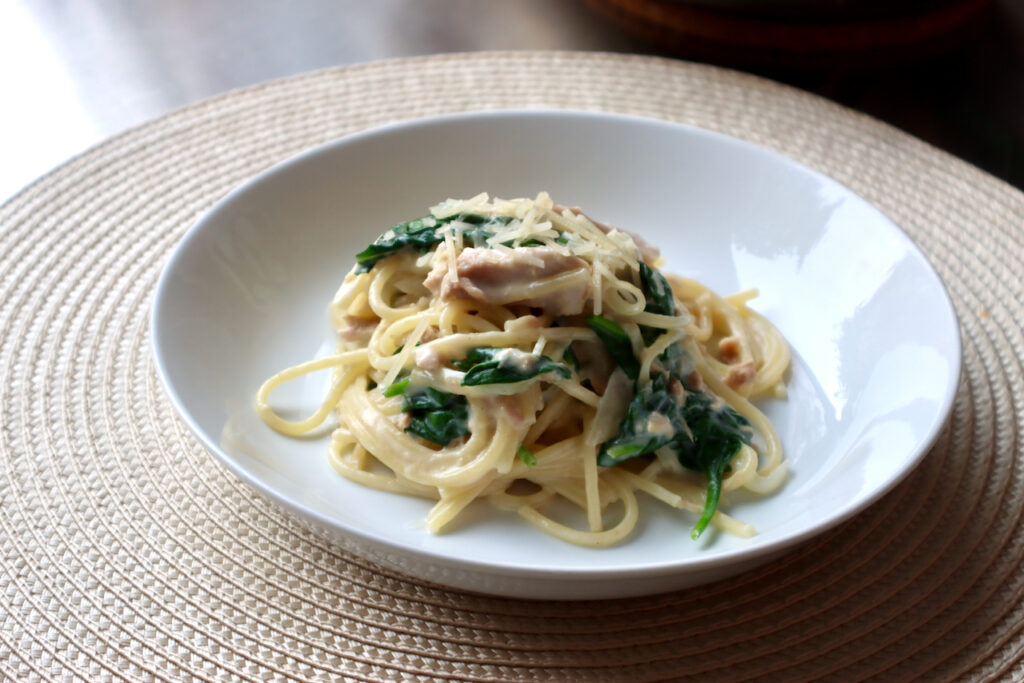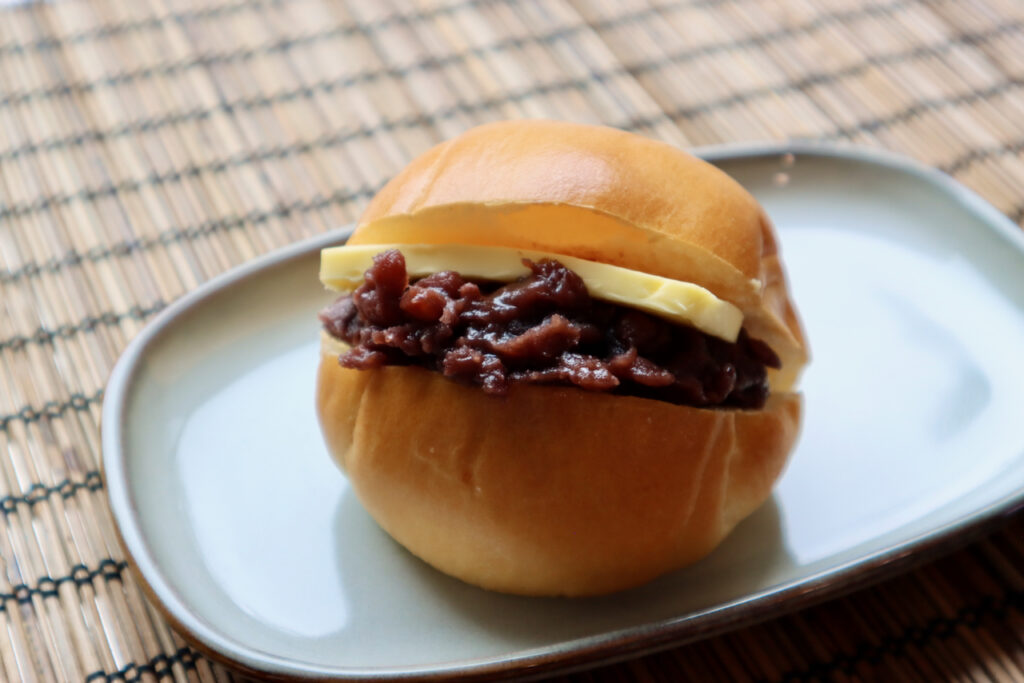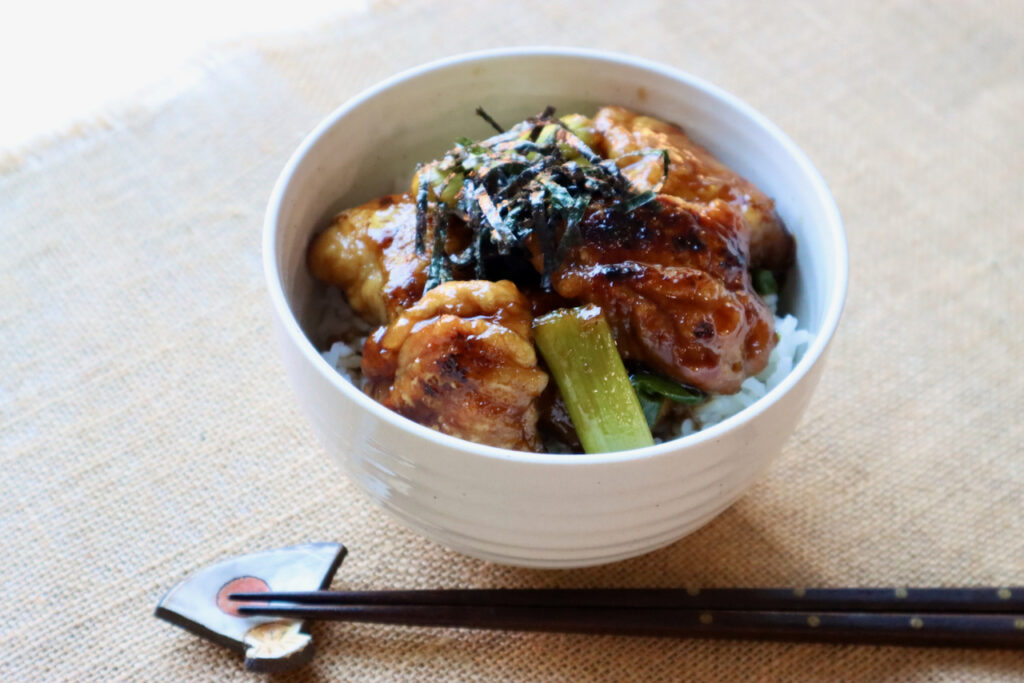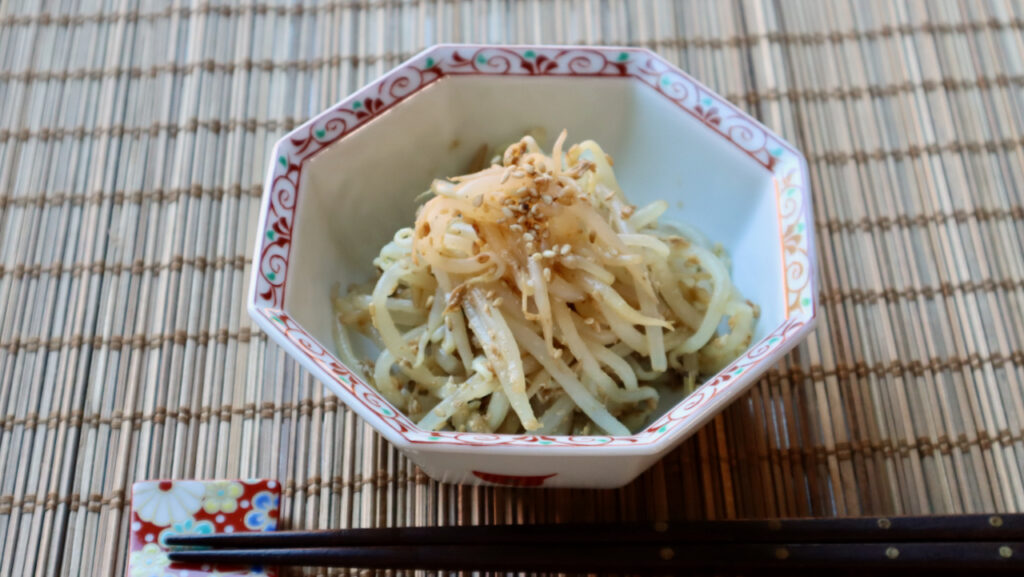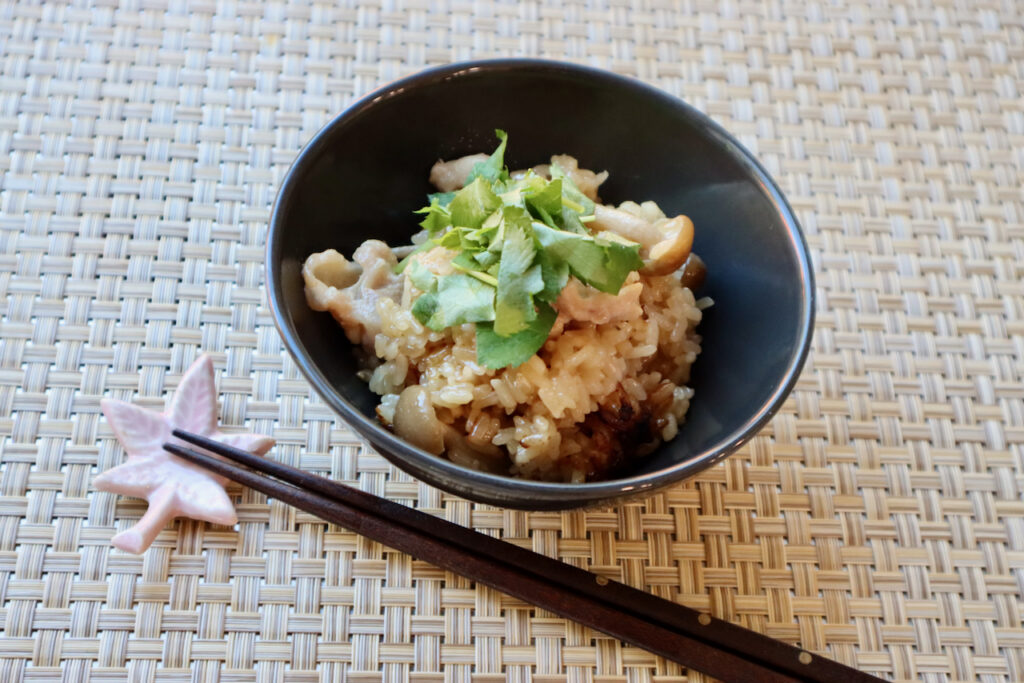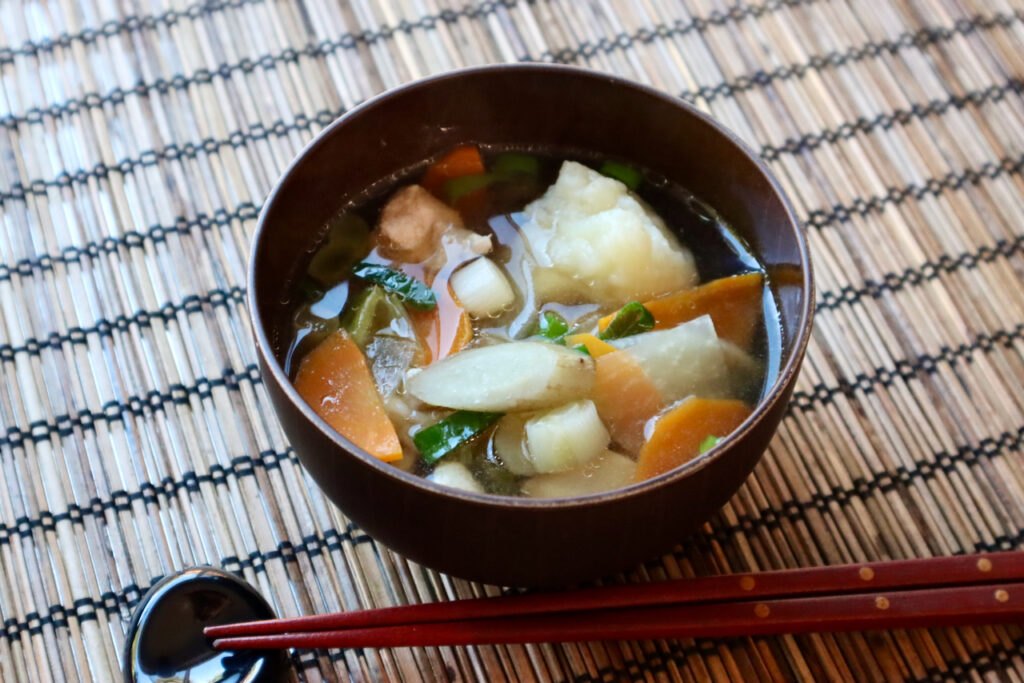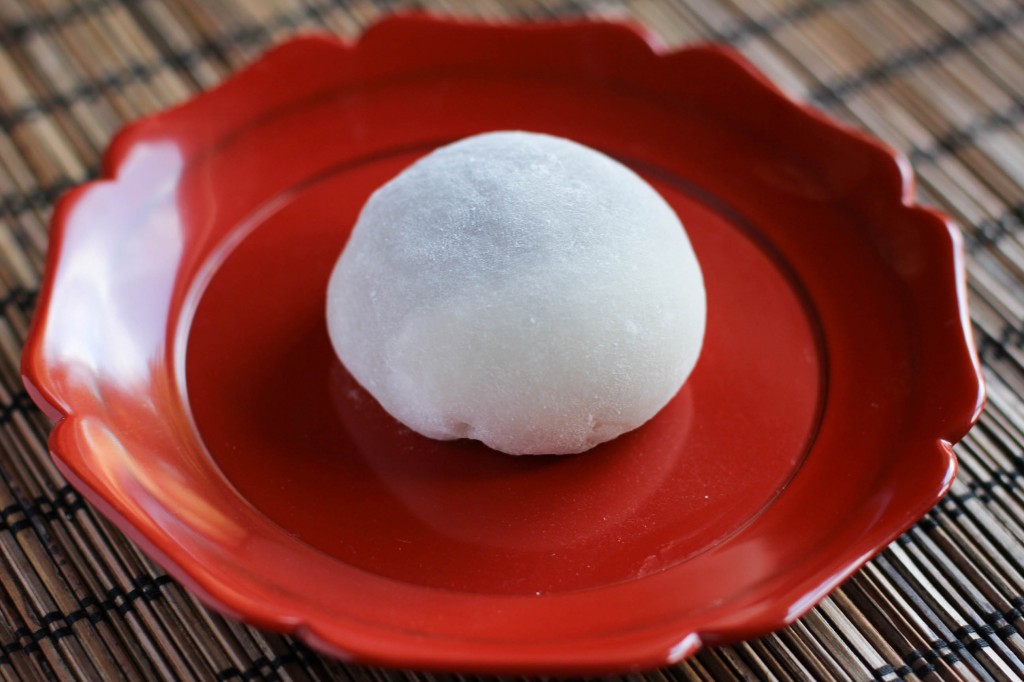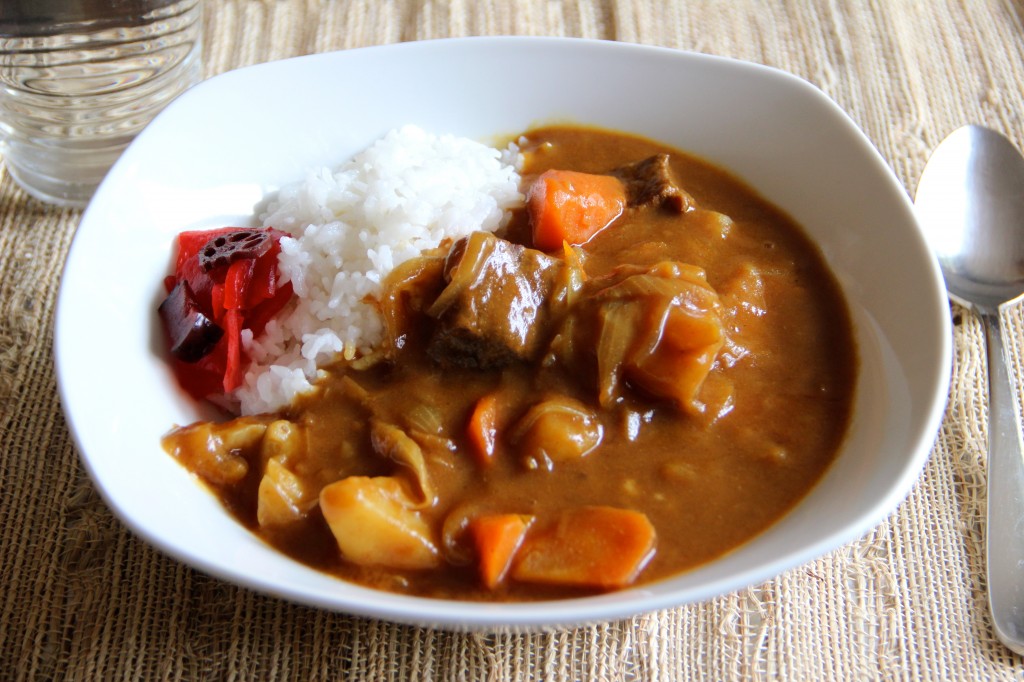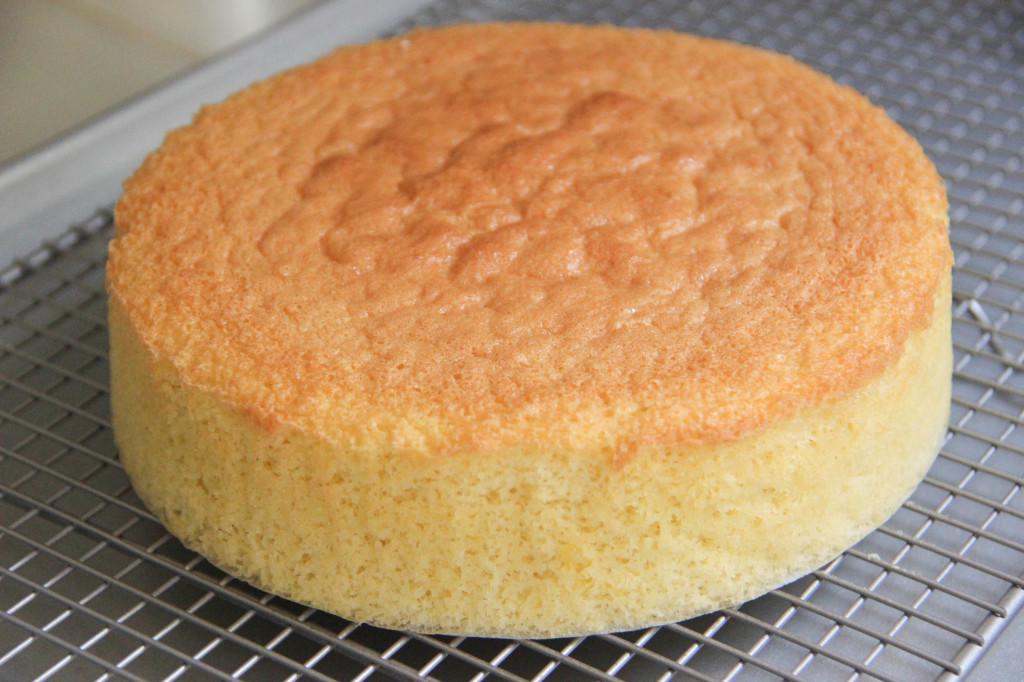Pork Shabu Shabu is a Japanese hot pot dish with thinly sliced pork and vegetables. Meat and vegetables are cooked in a simple Kombu broth and dipped and eaten with Ponzu Sauce. Pork Shabu Shabu is an easy but wonderful dinner when coming back home from the chilly outside.
Shabu Shabu usually indicates a Japanese hot pot dish (all hot pot dishes are called “Nabemono” or ”Nabe”) with paper-thin sliced beef. But here it is with thinly sliced pork in place of beef. Instead of packing the pot with all the ingredients like Mizutaki, leave some room in the pot so that you can easily dip your thin meat in hot broth and swirl them around to cook. It should be cooked at the dinner table using a portable gas stove and eaten as we cook, the same as other Nabemono.
